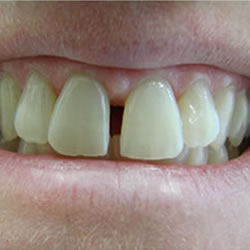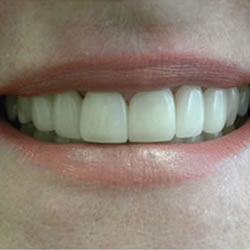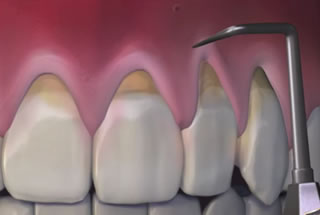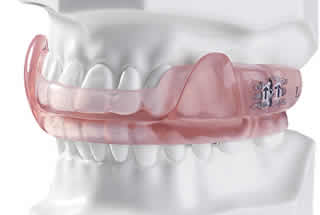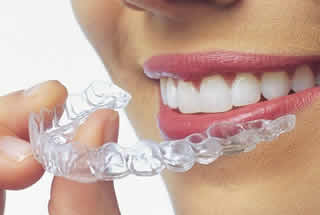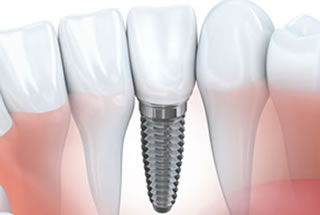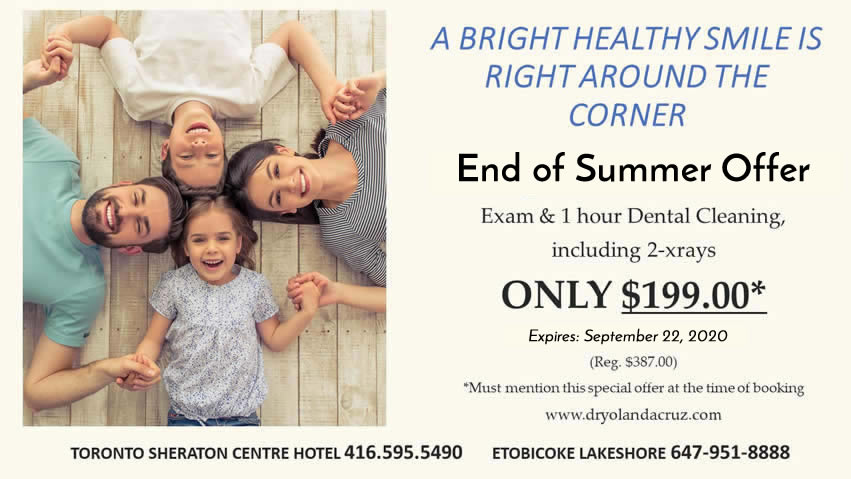Has your sleep partner complained about your snoring? Though you may just consider it a mild annoyance, snoring often indicates obstructive sleep apnea (OSA), a serious health condition. With sleep apnea, you can actually stop breathing for brief time periods. In some cases, patients have hundreds of apnea episodes during the night that can last for a minute or longer.
The following symptoms could suggest sleep apnea:
• Constant fatigue
• Daytime grogginess
• Impaired judgment
• Irritability
• Moodiness
OSA is caused when the soft tissues collapse in the back of the throat, blocking the upper airway and causing the airflow to stop. If oxygen levels drop low enough, the brain signals a problem and you will awaken to restore breathing. While OSA causes daytime sleepiness and concentration problems, many people don’t realize that more serious issues are associated with this disorder. Sleep apnea patients can experience:
• Bruxism (teeth grinding)
• Diabetes
• Heart Problems like heart attack, congestive heart failure, and hypertension
• High Blood Pressure
• Increased risk for work-related and driving-related accidents
• Strokes
Without treatment, obstructive sleep apnea can shorten the average life span by 10 years.
After you are diagnosed with sleep apnea, which may involve a sleep study through your physician, you can talk with your dentist about treatments. Your dentist can fit you for a custom-made oral appliance that will keep your mouth in the correct position to prevent snoring and apnea episodes.
Dr. Yolanda Cruz dentistry – Sleep Apnea Treatment – Toronto Canada Dentist
The food you eat, beverages you drink, and choices you make may diminish your bright smile. Dull, yellowish teeth can make you look older and feel self-conscious about your appearance. Safe and effective, teeth whitening can lift discolorations and renew your smile’s radiance.
Television and print ads for home whitening kits promise stunning results, but it may be hard to tell if these products work. Most dentist offer some form of teeth whitening, such as in-office or take-home whitening. Understanding the options will allow you to make an informed decision about updating your smile.
Over-the-counter whitening
Drug stores and supermarkets stock rows of whitening products on their shelves. These rinses, strips, and toothpastes often use peroxide to remove surface stains. While you may see some change, these products don’t usually generate the lasting impact of the professional whitening products offered by your dentist.
In-office whitening
If you decide on in-office whitening, your dentist will utilize professional-grade whitening gel, with or without an activating light. In-office whitening produces immediate results, lightening teeth up to 10 shades.
At-home professional whitening
Some people would like to brighten their teeth on their own schedules, so dentist-supplied whitening kits work well for these cases. Before whitening begins, the dental team will fit you for custom bleaching trays. Your dentist will then provide the bleaching agent. Apply the gel to the trays and wear them as directed. In just two to three weeks, you should notice a dramatic difference in your pearly whites.
We create beautiful, healthy smiles at Dr. Yolanda Cruz dentistry
Millions of people don’t receive necessary dental care because they hate to visit the dentist. Not only can your beautiful smile lose its luster, but your oral health can also suffer. Checkups allow your dentist to evaluate teeth and gums to keep an eye out for problems such as cavities, gum disease, and oral cancer.
Because dentists know that patients can experience fear and anxiety about dental appointments, most practices work hard to reassure their clients. Usually, the dentist will explain any recommended treatment in detail and answer all questions so that you can feel comfortable about the procedure. Some offices provide comfort measures such as pillows, blankets, headphones, and eye covers.
Sedation dentistry is another option for nervous patients. Depending on your level of concern, your dentist may recommend one or more of the following options:
Nitrous oxide
Also referred to as laughing gas, nitrous oxide is a clear, sweet-smelling vapor that you breathe in through a mask placed over your nose. Nitrous oxide produces warm, peaceful feeling that only lasts as long as you breathe in the gas. Once your dentist stops the nitrous oxide flow, any symptoms will disappear.
Oral sedation
If you choose oral sedation, you will take a dose of anti-anxiety medicine about an hour before your appointment. A responsible adult will need to drive you to and from the dentist’s office. Oral sedation will allow you to completely relax during treatment.
You are in good hands at Dr. Yolanda Cruz dentistry – Sedation Dentistry – Toronto Canada Dentist
When you meet new people, you often notice their smiles right away. A bright, gorgeous smile can convey warmth and grace. In fact, most people believe that smiling is an important part of our interactions with others. People don’t often realize that smiling offers many benefits. The following facts will help you remember to put your best smile forward:
Smiling can improve your mood.
When you smile, your body releases endorphins, which helps control pain and improve your attitude.
Smiles transcend language and cultural barriers.
No matter where you live, where you are from, or where you visit, smiling communicates friendliness and sincerity.
Frowning is more work.
Did you know that it actually takes more muscles to scowl than it does to smile? Frowning can also lead to lines and wrinkles on your face, so smile often!
Smiling is often a precursor to laughter.
Research has shown that laughing can reduce stress and promote relaxation.
You can connect with other people through your smile.
On your job or in social settings, a smile lets other people know that you are approachable and receptive to engaging with them.
Smiling can make you look better.
One of the best tools available to accentuate your appearance is a vibrant smile.
If you feel self-conscious about your smile, talk with Dr. Yolando Cruz about dentistry options such as bonding and contouring, porcelain veneers, and teeth whitening. Even subtle changes can make a big difference in your image.
Dr. Yolanda Cruz dentistry – Cosmetic Dentistry – Toronto Canada Dentist
If you brush, floss, and see your dentist, your teeth and gums will stay healthy. Advances in dentistry have given people various tools and options to keep their smiles in tip-top shape. Learn more about the products you should keep in your bathroom to promote optimal oral health.
A good toothbrush
Often, people have a hard time choosing between manual and electric. The most important thing is to find a toothbrush you will put to good use. Whichever type you select, pick a brush with soft bristles so that you don’t damage the gums.
The right toothpaste
Make sure to select toothpaste with fluoride. If you have issues like sensitivity, you may want to choose a formula designed to address the specific problem.
Dental floss
You may think that all floss is the same, but that is not the case. Dental floss comes in a variety of widths, flavors, and styles. Try several options so that you can find the floss that best suits your mouth.
Interdental cleaners
These small, Christmas tree-shaped brushes can clean between teeth and work well for patients with receding gums or those with permanent dental appliances in place.
Mouth rinses
Created to remove bacteria from your cheeks, under your tongue, and other hard-to-reach areas in your mouth, dental rinses may contain a variety of ingredients, from fluoride to calcium, to improve oral health.
Dr. Yolanda Cruz dentistry -Toronto Canada Dentist – Dental Products
Before you or a loved one decide to get a lip ring or tongue piercing, you need to understand the dangers associated with this choice. Oral piercings may seem like a cool accessory, but serious complications can occur from these embellishments. Conservative estimates suggest that up to 20 percent of oral piercings become contaminated. Other issues can arise as well, nerve damage, excessive bleeding, and infection. One of the most common problems associated with oral piercings are broken and chipped teeth – caused when hard or metal tongue jewelry accidently come in contact with teeth.
If you are determined to get an oral piercing, follow these instructions for the best outcome:
Select a safe establishment
Each state has licensing and regulation in place, so check that the shop you have chosen meets these standards. Ask friends and family for referrals as well. Make sure the piercer is going to wear fresh gloves and use a sterile needle.
Consider the jewelry
You need to choose jewelry made from hypoallergenic materials such as 14K or 18K gold, titanium, niobium, surgical stainless steel, biocompatible polymers, or glass. Cheaper products can cause allergic reactions.
Take care of your piercing
Your piercer should provide instructions for home care. Clean the piercing and area with an antiseptic, alcohol-free mouthwash or a sterile saline solution after you eat and before bed. Gently rotate the piercing to so that the solution gets into the piercing. At night brush the jewelry with a new, soft-bristled toothbrush.
Contact your dentist if there’s trouble
Infections and broken teeth can cause serious problems, so call your dentist or orthodontist immediately if you notice anything suspicious. Don’t remove the piercing or attempt self-treatment.

 E-Mail Us
E-Mail Us  416-595-5490
416-595-5490